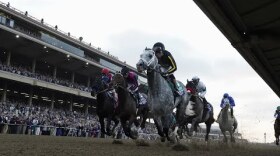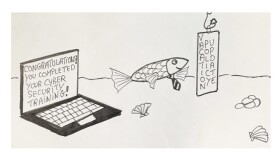SACRAMENTO, Calif. (AP) -- A federal judge approved a request from California and federal officials to force-feed inmates if necessary as a statewide prison hunger strike entered its seventh week.
Officials say they fear for the welfare of nearly 70 inmates who have refused all prison-issued meals since the strike began July 8 over the holding of gang leaders and other violent inmates in solitary confinement that can last for decades.
They are among nearly 130 inmates in six prisons who were refusing meals. When the strike began it included nearly 30,000 of the 133,000 inmates in California prisons.
Prison policy is to let inmates starve to death if they have signed legally binding do-not-resuscitate (DNR) requests. But state corrections officials and a federal receiver who controls inmate medical care received blanket authority from U.S. District Judge Thelton Henderson of San Francisco to feed inmates who may be in failing health. The order includes those who recently signed requests that they not be revived.
Henderson oversees the ongoing lawsuit over inmates' medical care. The filing Monday came as prison officials and inmates' attorneys argued over whether strikers should be allowed to voluntarily begin a liquid diet.
"Patients have a right to refuse medical treatment. They also have a right to refuse food," said Joyce Hayhoe, a spokeswoman for the receiver's office.
However, "If an inmate gets to the point where he can't tell us what his wishes are, for instance if he's found unresponsive in his cell, and we don't have a DNR, we're going to get nourishment into him. That's what doctors do. They're going to follow their medical ethics," Hayhoe said.
The process, which prison officials call "refeeding," could include starting intravenous fluids or snaking feeding tubes through inmates' noses and into their stomachs.
Prison officials already can seek a court order forcing an individual inmate to take food, though they have not done so. Now they and the receiver's office are jointly asking for blanket permission to take that step without seeking orders on a case-by-case basis.
The federal and state officials were joined in the request by the Prison Law Office, a Berkeley-based nonprofit that represents inmates' welfare in ongoing lawsuits that led to a federal takeover of the prison health care system and a requirement that the state sharply reduce its inmate population to improve conditions.
They want Henderson to let the chief medical executive at each prison act if a hunger striker is at risk of "near-term death or great bodily injury" or is no longer deemed competent to give consent or make medical decisions.
Moreover, do-not-resuscitate directives would not be honored if the medical executive reasonably believes the inmate was coerced into signing the request or if an attorney representing the inmate revokes the request.
Do-not-resuscitate orders signed by a hunger striker at or near the beginning of the strike or during the hunger strike would automatically be deemed invalid.
"Force-feeding violates international law to the extent that it involves somebody who doesn't give their consent," said Jules Lobel, president of the Center for Constitutional Rights, who represents 10 inmates suing to end prolonged solitary confinement at Pelican Bay State Prison.
Lobel said prison officials should look for alternatives, including providing the inmates with a liquid diet of fruit and vegetable drinks as they have requested, or negotiating with inmates over their demands.
However, Lobel said he will not seek to overturn Henderson's order.
Prison officials said Monday that inmates are free to consume a liquid diet, but will be counted as having ended their hunger strike if they consume anything more than water, vitamins and electrolytes.
The most high-profile case of force-feeding prisoners has been the involuntary feeding of several dozen terrorism suspects held at Guantanamo Bay through nasal tubes.
Other federal judges have turned down bids by the Guantanamo Bay inmates to stop the force-feeding.
California incarcerates about 3,600 inmates in what are known as Security Housing Units, some because of crimes they committed in prison and others for indefinite terms if they are validated as leaders of prison gangs.
Four prisons have the units: Pelican Bay in Crescent City, Corcoran, California Correctional Institution in Tehachapi and California State Prison-Sacramento.
The highest-ranking gang leaders are held in what is known as the "short corridor" at Pelican Bay. Four leaders of rival white supremacist, black and enemy Latino gangs have formed an alliance to promote the hunger strike in a bid to force an end to the isolation units.






